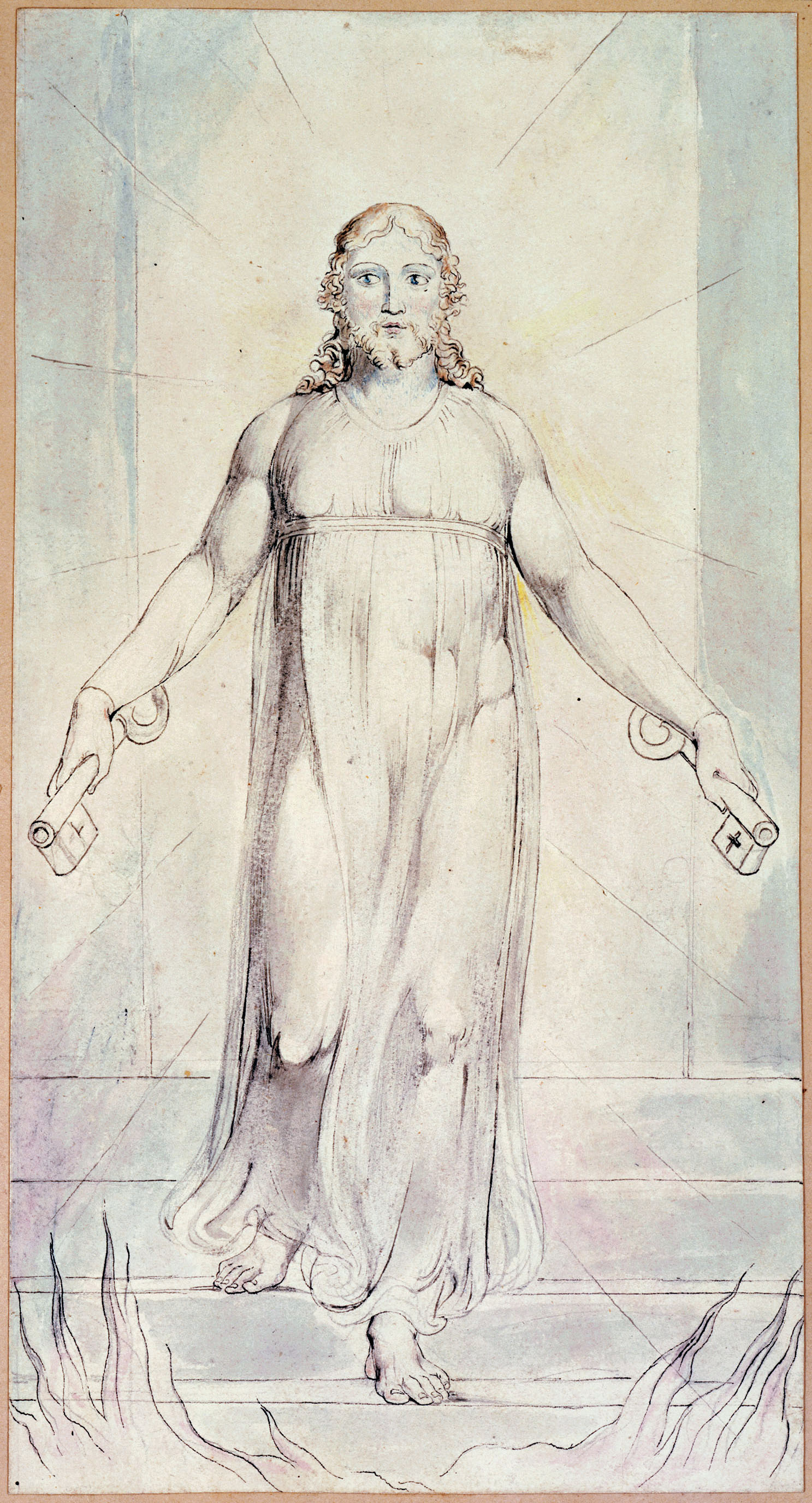John 14:2
Henry Fuseli and William Blake were both 'corporeal' friends and
spiritual friends: they enjoyed each others company and shared
interests, but they also related with each other through the bond
of a common spiritual sensitivity. Fuseli recognized in Blake's
watercolor illustrations for Blair's The Grave the
implications of what he was trying to communicate of everyman's
spiritual journey. To enhance the message that Blake incorporated
in his illustrations, Fuseli arranged the pictures in the order
appropriate to carry Blake's message.
Fuseli:
"By the arrangement
here made, the regular progression
of Man, from his first descent into the Vale of
Death, to his last admission into Life eternal, is
exhibited. These Designs, detached from the
Work they embellish, form of themselves a most
interesting Poem."
I. THE DESCENT OF CHRIST INTO THE GRAVE.
II. THE DESCENT OF MAN INTO THE VALE OF DEATH.
III. DEATH'S DOOR
IV. THE STRONG AND WICKED MAN DYING.
V. THE GOOD OLD MAN DYING.
VI. THE SOUL HOVERING OVER THE BODY.
VII. THE SOUL EXPLORING THE RECESSES OF THE GRAVE.
VIII. THE COUNSELLOR, KING, WARRIOR, MOTHER, AND CHILD.
IX. THE SKELETON RE-ANIMATED.
X. THE RE-UNION OF SOUL
XI. A FAMILY MEETING IN HEAVEN.
XII. THE LAST JUDGMENT.
To Blake the Door of Death marked entry into earthly life. Christ
and Man alike enter the door of death to gain experience by living
in a physical, mortal body. A man takes on an identity on earth
suited to the tasks assigned to him. Although the man may experience
himself as a body separated from his soul this is a misapprehension.
The soul remains a presence which can be accessed whenever the body
is prepared to receive it. In the Vale of Death are many mansions
which the man may have occasion to explore as he seeks the truth
which will remain when error is annihilated. When the trumpet sounds
for a man he receives the transcending vision and his body of flesh
is exchanged for a spiritual body suited for Eternity. Man is not
alone in the Eternal Realm but reunited with the company of the redeemed in the
fellowship of love. Error is annihilated and truth reigns when the
Last Judgment separates the Eternal from the transient, the Infinite
from restraints of space.
Cromek, the publisher, did not follow the order suggested by Fuseli
but used a completely different order in the published book:
1 Title Page - The Grave - A Poem
2 Christ Descending
3 The Meeting of a Family in Heaven
4 The Counselor, King, Warrior, Mother and Child in the Tomb
5 Death of the Strong Wicked Man
6 The Soul Hovering Over the Body reluctantly parting with Life
7 The Death of The Good Old Man
8 The Descent of Man into the Vale of Death
9 The Day of Judgment
10 The Soul Exploring the Recesses of the Grave
11 Death's Door
12 The Reunion of the Soul & the Body
The arrangement by Cromak follows the more common understanding of
Death as the end of Life when the evil man is subject to punishment
and the good man is rewarded in heaven by being rejoined by his soul
from whom he was alienated on earth.
 |
Fuseli's arrangement Blake watercolor |
 |
Page 1
Cromak's arrangement
Schiavonetti's Engraving
|
No comments:
Post a Comment